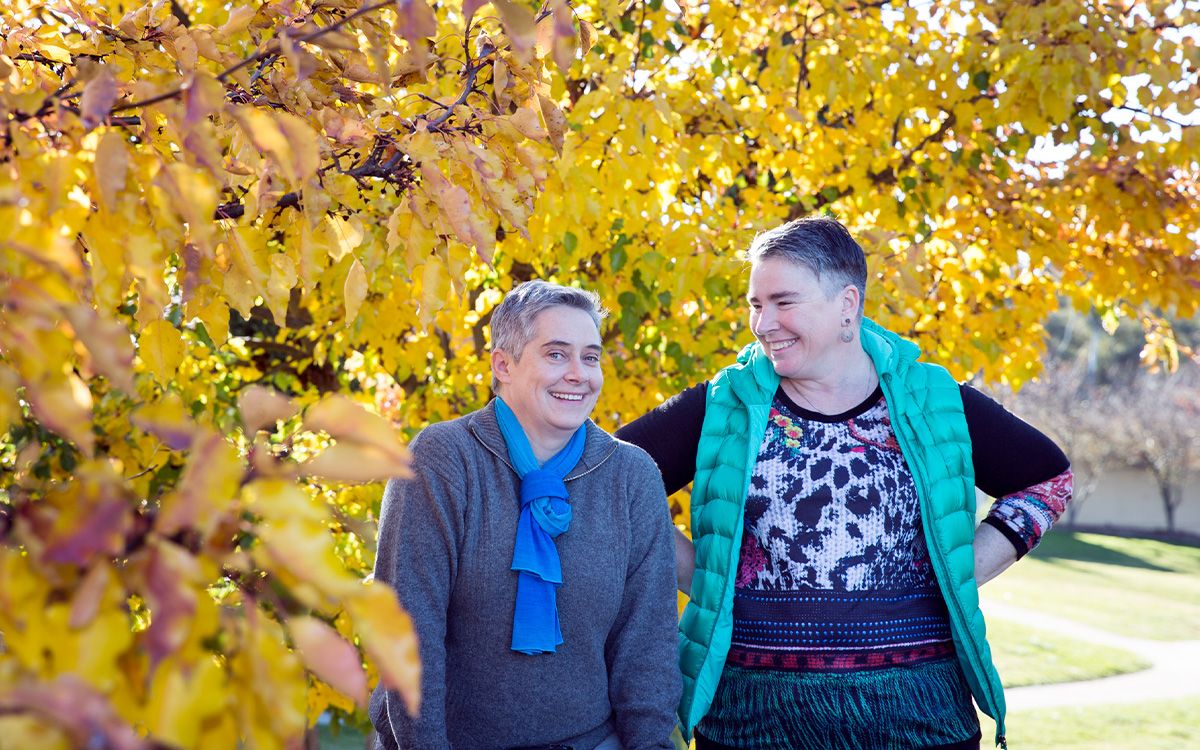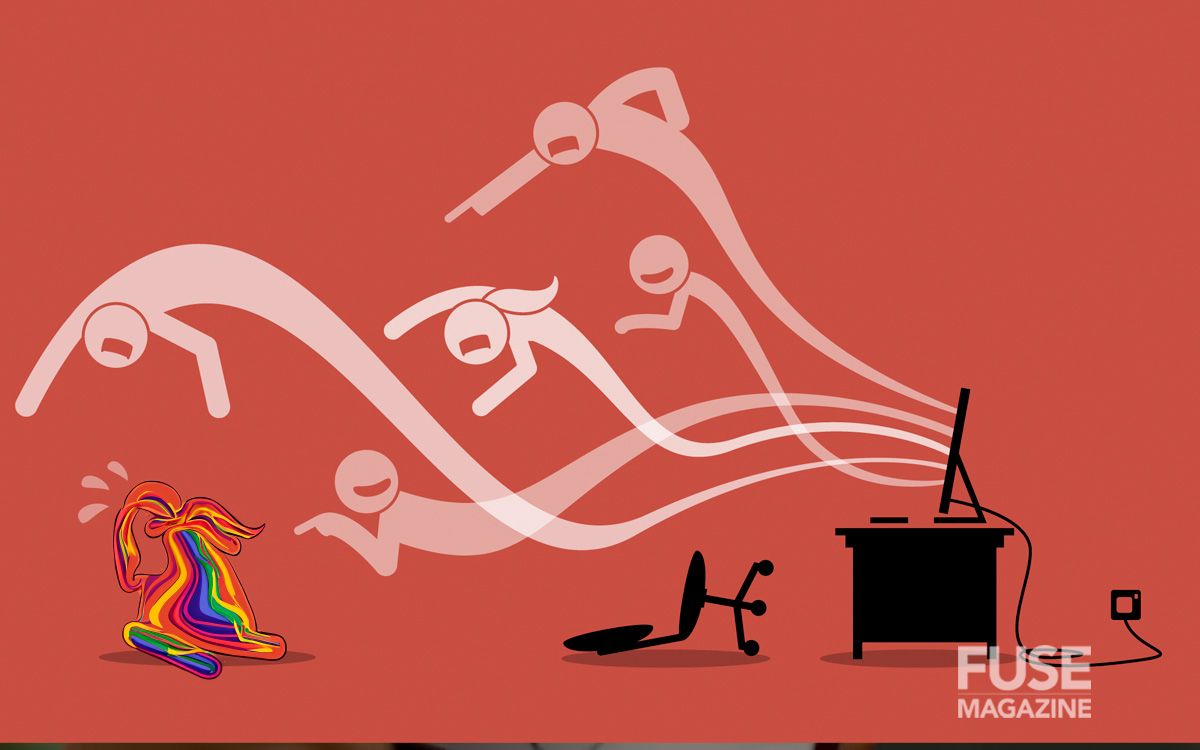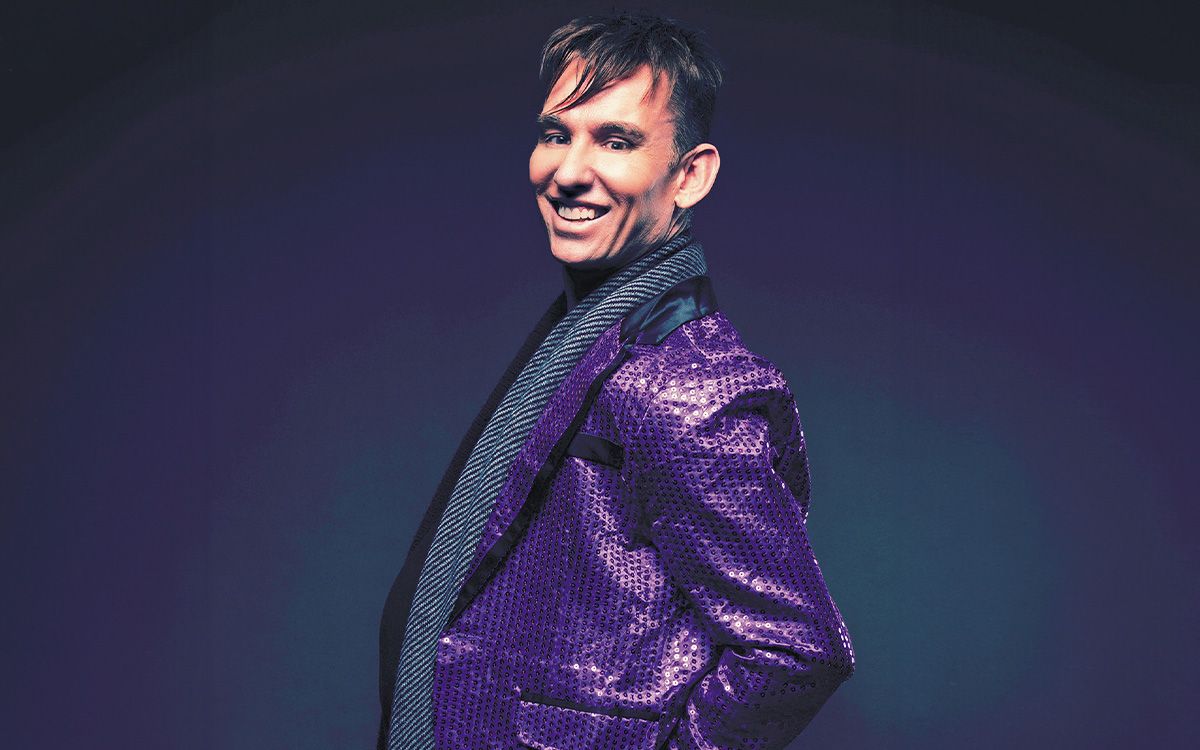Sparklemuffin — Stepping Out With Pride
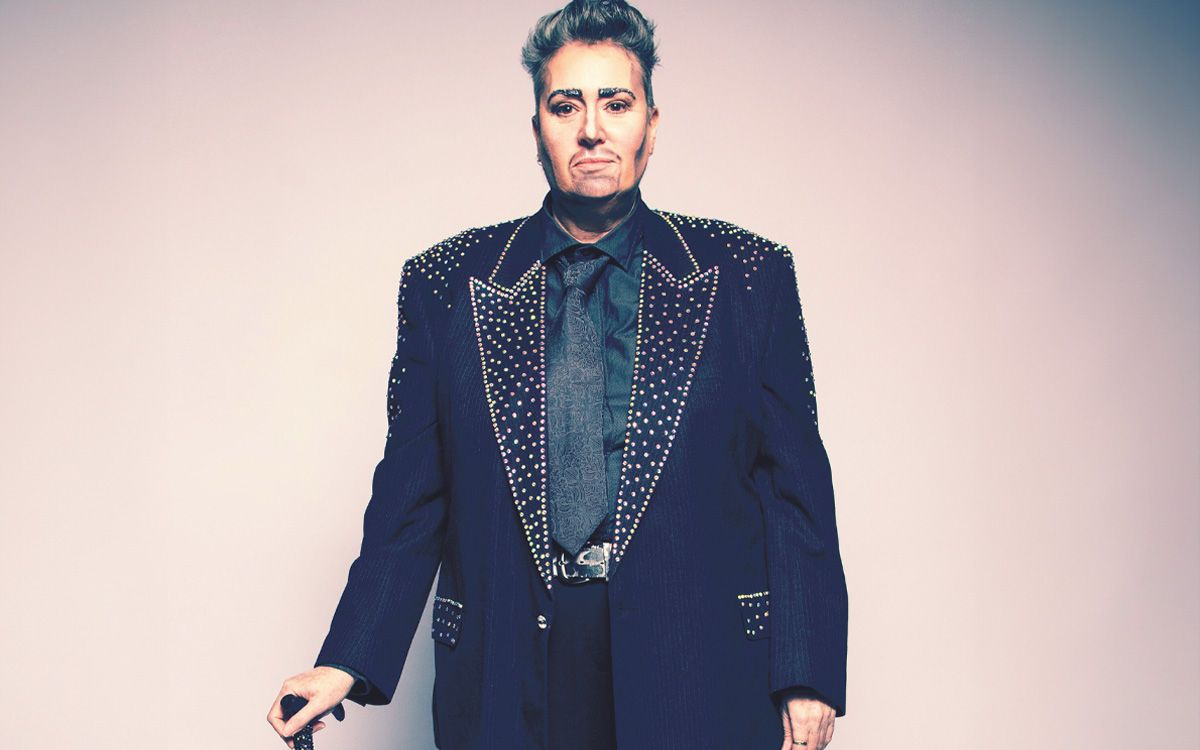
Canberra’s drag king scene has a glittering gem in Megan Munro — better known as their alter ego, Sparklemuffin. A drag performer, artist and producer, Megan is the creative force behind The Queer Variety Show, which has an inclusive format that centres on disabled LGBTIQA+ performers and proves that accessibility and great entertainment can go hand in hand.
Launched in 2022, The Queer Variety Show was born from Megan’s own experiences of feeling excluded from queer and mainstream events due to inaccessibility. Determined to change that, they built a space where every performer and audience member feels safe, supported and seen. Since then, the show has grown into one of Canberra’s most inclusive creative stages — earning Megan the Chief Minister’s Inclusion Award for Excellence in Making Inclusion Happen.
We sat down for a chat about Megan’s drag journey, inclusion and disability in entertainment, and what it means to be able to express yourself with dignity and pride on stage.
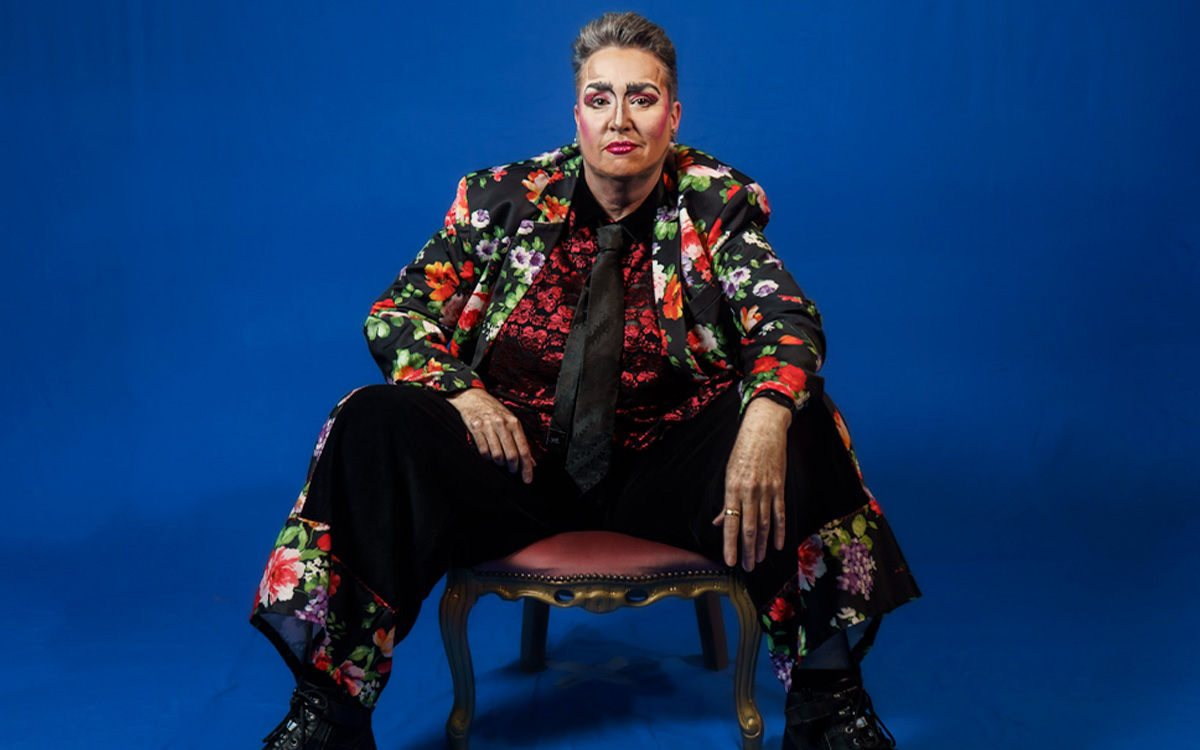
Sparklemuffin — Stepping Out With Pride. Photo by Tobias Price
FUSE: In what ways is The Queer Variety Show different to other shows that people may have seen or participated in?
Megan Munro aka Sparklemuffin: Accessibility is key to everything we do. Myself and our team, Temerity Outrè, Velvet Garnet, Ditzy Dreams and Dread Sexy, have added many features to the event to aid in access for everyone. Our model means that even if someone is unwell or unable to do their bit, another person can step in.
There must be quite a few personal challenges? my health has been my biggest challenge.
It is unpredictable; some days I’m fine, other days I’m not. I have been disabled for almost the entire 20 years I have been performing. This has meant I have missed out on being able to participate in training, travelling and generally going out. I must pick days to do tasks, know my limits and when to ask for support. I find that ableism is also a big issue; there is a lot of performative ‘inclusion’ with other events, for both audience members and performers.
What are some of your favourite show moments?
Usually the quiet ones, and knowing that a performer did a really great job when it was their first time on stage. Knowing that a performer feels comfortable when they make a mistake, because we have created a very safe environment, always feels good. Having audience members tell us how much they love the show and how safe they feel. Every show we have a box to collect ‘love notes’ or feedback for any of the performers. People can leave comments which we share later and post online. It’s a really nice way to support and engage with the artists.
What do the performers get from being on stage?
As well as the opportunity to share their stories through art in an inclusive and safe space, I also think the performers get a real sense of community.
What do you hope audiences take away from the shows you produce?
It’s simple. I hope they are entertained, have a good time, feel safe, connected to community. I also hope they realise that disabled folk are just as capable and entertaining as anyone else, because we are.
The shows often feature a mix of drag, burlesque, poetry and music. How do you weave such diverse acts into a cohesive, exciting night?
For me, this is almost an instinctual thing. I usually go for the ‘vibe’ of the individual performer and consider how that will go with the other acts happening. I often start the show with something energetic — a burlesque or drag act. I like to put acts that might be heavy or challenging in the middle of the show and end it with a positive or fun act. That way, people are taken on an emotional journey.
When seeing mainstream entertainment, whether it be film or stage, do you feel disabled performers get enough representation?
No and often the ‘disabled person’ is performed by a non-disabled person. I think disabled actors and entertainers bring actual lived experience and nuances that you can’t possibly get if the person is non-disabled. Disabled folk are underemployed and underrepresented.
Can you tell US how Sparklemuffin and your other Drag alter egos came to be.
I started performing as a drag king in Canberra 20 years ago, as Mr Green Teal. I got this name when I was thinking about doing drag and was chatting to a woman on The Pink Sofa. I told her about my drag aspirations and then later that the colour of the paint of my bedroom was a green teal. She started calling me Mr Green Teal and so that name was used for some years.
About 5 years later, I started doing burlesque. I needed a new name and came up with Arachne Phobia. This is because I love spiders. I’m also a textile artist and I play around with threads a lot in a lot of different ways, like spiders. I later decided to change my drag name again because it still didn’t feel right. I eventually chose the name Sparklemuffin to capture all my performance, drag and burlesque.
Sparklemuffin is a nickname of the peacock spider, Maratus jactatus. I also have a burlesque character, who is relatively new, Mena Paws. I felt that Mena was a very distinct character of her own and needed her own name. I’ve also used Skid Mark and Aladdon Heat. Basically, it took me many years to realise I’m character-driven with my acts and I don’t have one style.
How do your personas challenge ideas about gender and disability in drag culture?
I think I’ve always challenged ideas in drag culture. For many years I was the only visible drag king in Canberra. Being a drag king early on was a real novelty. Many people I came across had never seen a king.
These days, it’s my age and the fact that I often use mobility aids in my acts that would challenge drag culture. I must admit, I feel quite removed from that culture because I’ve always felt so different. For me, all my presentations are drag; but they are also an expression of who I am, so therefore, not drag.
I often mix things up. I will present as masculine on the outside, then I will strip down and do tassel twirls or have very feminine underwear on. Not many people in the ‘drag scene’ have seen these types of acts. My shows are about disability, queerness and now age — or being older — because this is who I am. So just being me challenges stereotypes.
We also have other people in Canberra who are challenging stereotypes as well. Desire Bility is an amazingly talented drag and burlesque performer. She is a wheelchair user and finds it difficult to get to gigs in Canberra. Sometimes she can’t even get her wheelchair in the door of the venue to perform. This can be a common problem.
As a crochet artist and multi-disciplinary creator, is there any crossover in your performance work?
There are loads of crossovers. This can be seen in my costumes. I have a few acts with elaborate costumes that I have made. I style and put most of my costumes together, and often add a lot of embellishment or extra bits to them. I do have one costume that is all crochet, including a crochet wig — I unravel out of it.
What can we expect from your SpringOut shows coming up at Smith’s Alternative?
We have our Seven Deadly Sins Show, presented by Velvet Garnet. It will be a colourful show with loads of different ways to interpret the seven deadly sins. Our It’s a King Thing Show will be all drag kings. I will be recording the emcee parts as Mena Paws, with intros being on a screen. Then I’ll also be performing as Sparklemuffin. I’m developing a new act, based on the sparklemuffin spider mating dance. Our last show for the year will be our I-Day Eve Show, curated by Temerity Outrè. I-Day is the International Day of People with Disability. This show will have the usual variety of acts, including burlesque, drag, music and poetry.
For more deets about Sparklemuffin and their art and shows check them out online at : arachneart.com.au on Instagram or Facebook | Visit smithsalternative.com
Queer Variety Show
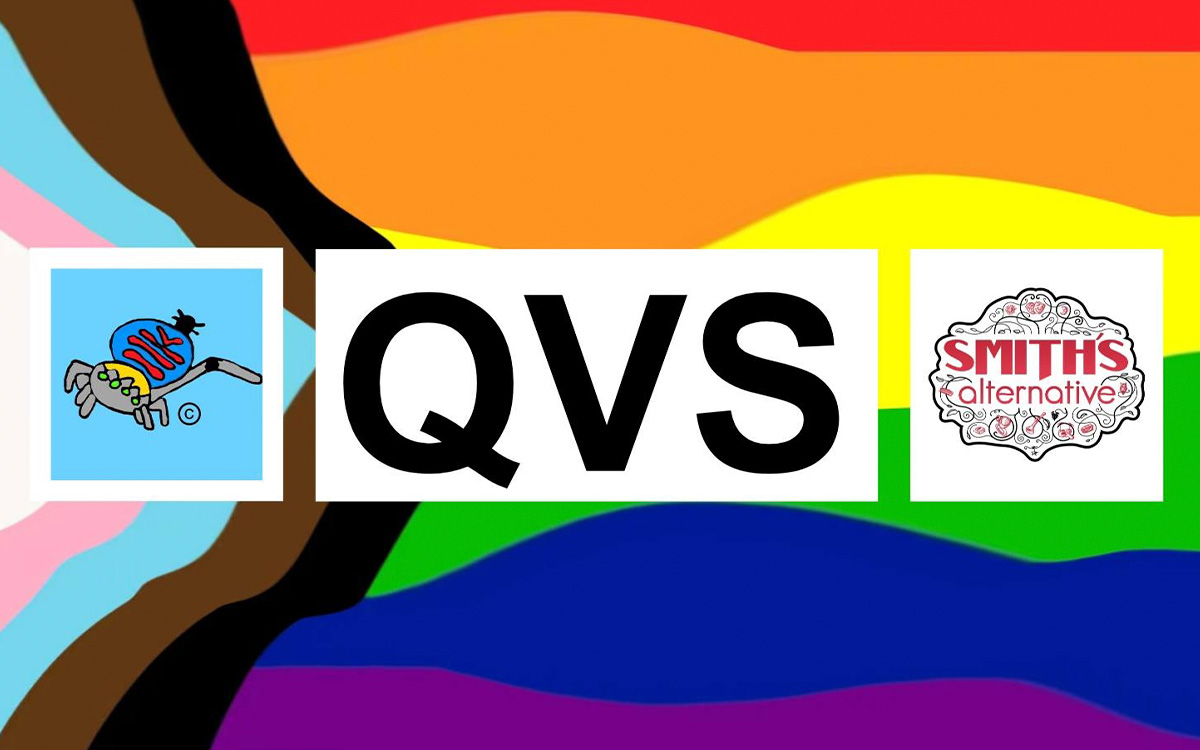
Get you tickets now! The Queer Variety Show is a variety show that features Queer/LGBTIQA+ and Disabled (includes, chronic illness, mental illness, neurodivergent) people, with the occasional ally.



